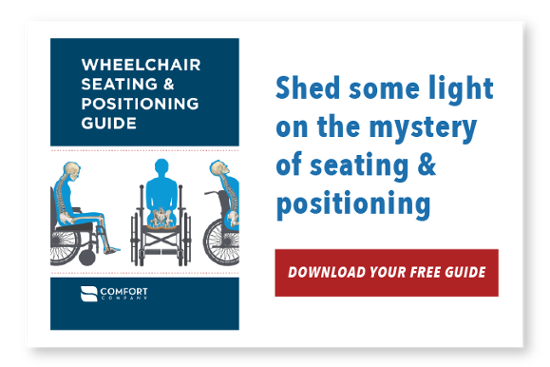Part 3 in our series A to Z Considerations for Seating & Wheeled Mobility: A Quick Reference Clarifying Confusion Around CRT. See Part 1, Part 2, Part 3, Part 4, Part 5, Part 6, Part 7, Part 8, Part 9, Part 10, Part 11, Part 12, Part 13, Part 14, Part 15, Part 16, Part 17, Part 18, and Part 19.
In the midst of this ever-changing healthcare climate and ongoing reimbursement cuts, we all know productivity and efficiency have become a major focus of the organizations for which we work. It is a necessity for us to continue providing the quality of care our clients deserve while also keeping the doors open and the lights on.
It is a daily struggle to balance and prioritize our time as clinicians.

Of course we want to dedicate as much time as possible to bettering the lives of our patients, but we also have to meet the requirements of insurers. This means completing the necessary documentation so clients can continue to receive our services or obtain the appropriate equipment needed to facilitate independence and improve overall health and well-being.
So, if you are like me, the idea of performing a seating evaluation and completing all the necessary documentation required for a client to ACTUALLY receive the needed equipment seems like a daunting task!
If you do not perform seating evaluations daily, weekly, or even monthly, this task can feel particularly overwhelming and even scary. In my experience, most people tend to think they do not have the time nor do they feel confident in their ability to correctly complete the write up. Regardless of your level of expertise when it comes to documentating wheelchair seating and positioning and irrespective of the setting in which you practice, I will provide you with some guidance, tips, and ideas that can improve both your efficiency and confidence.
At the end of this blog series, you will see that writing up your evaluation and completing that “letter of medical necessity” can be something that takes only a few minutes of your time, that it can flow easily into your everyday practice, that we can avoid denials and having to “re-do” our documentation, and that we can help put an end to those dreaded late nights at the office or writing letters of medical necessity from home (both of which I used to do!).
Let’s start by looking at the EVALUATION piece of the puzzle.
Many clinicians think they have to do a separate seating evaluation for a wheelchair. Yes, an OT/PT evaluation is required, but not a separate evaluation. Here are my first tips:
- You can easily incorporate the need for the wheelchair within your normal documentation. Conduct your evaluation as you would any other OT/PT evaluation to determine the functional needs of your patient
- The results of the evaluation (i.e. strength, balance, spasticity, etc.) need to be translated into the seated posture and the impact on mobility and mobility-related ADLs.
- Be as descriptive as possible about the seated posture, the effect it has on function, and whether these abnormalities are reducible or non-reducible (i.e. flexible or fixed).
- Describe any current equipment the patient may have.
- Identify any current pressure injuries or history of pressure injuries.
Next week we will begin looking more in depth at translating the results of your typical PT/OT evaluation into the seated posture and exactly which pieces are relevant to wheeled mobility. I look forward to tackling this together!

Lindsey Sharpe, PT, DPT
Lindsey Sharpe graduated with a BA in Exercise and Sport Science from the University of North Carolina at Chapel Hill in 2007 and with her Doctor of Physical Therapy from Elon University in 2010. Lindsey was a practicing clinician for seven years primarily focusing on neurological conditions and wheelchair seating and positioning.
Lindsey was first introduced to wheelchair seating and positioning during her time on the spinal cord injury team at the University of Virginia's acute rehab hospital where she discovered her interest in and passion for this niche in the therapy world. Lindsey went on to open a brand-new seating clinic with Carolinas Healthcare System in Concord, NC where she advanced her knowledge and skills performing both inpatient and outpatient seating evaluations for clients of all ages having a variety of diagnoses.

